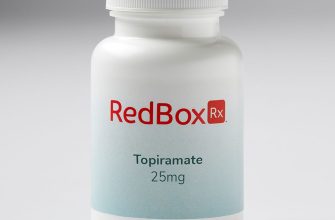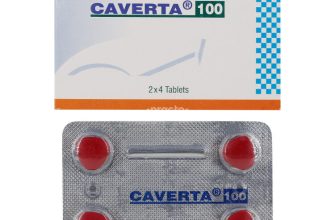Need information on cephalexin for your pet? Cephalexin, a first-generation cephalosporin antibiotic, effectively treats various bacterial infections in dogs and cats. Dosage depends on your pet’s weight and the specific infection; always follow your veterinarian’s instructions precisely.
Administer cephalexin orally, usually with food, to minimize stomach upset. Common side effects include vomiting and diarrhea; contact your vet immediately if these are severe or persistent. Never exceed the prescribed dosage or duration of treatment, as this can lead to antibiotic resistance.
Important Note: Cephalexin is a prescription medication. Obtain it only from a licensed veterinarian after a proper diagnosis. Improper use can harm your pet and contribute to the development of drug-resistant bacteria. Discuss any potential drug interactions with your vet before administering cephalexin, particularly if your pet is on other medications.
For accurate dosage and administration guidelines tailored to your pet’s specific needs, consult your veterinarian. They can provide personalized advice based on your pet’s health history and the nature of the infection. Regular follow-up appointments are also critical to monitor treatment efficacy and address any concerns.
- Veterinary Cephalexin: Uses and Indications
- Common Conditions Treated with Cephalexin
- Dosage and Administration
- Cephalexin Dosage and Administration for Pets
- Potential Side Effects and Adverse Reactions
- Allergic Reactions
- Gastrointestinal Issues
- Precautions and Contraindications
- Alternatives to Cephalexin and Importance of Veterinary Guidance
Veterinary Cephalexin: Uses and Indications
Cephalexin is a widely-used antibiotic in veterinary medicine for treating various bacterial infections. It is particularly effective in managing skin, soft tissue, and urinary tract infections in pets. Cephalexin works by disrupting the cell wall formation of bacteria, thereby inhibiting their growth and causing their eventual death.
Common Conditions Treated with Cephalexin
- Skin infections, such as pyoderma, hot spots, and abscesses
- Soft tissue infections, including wound infections and cellulitis
- Urinary tract infections (UTIs) in dogs and cats
- Respiratory tract infections, including bronchitis and pneumonia
- Bone and joint infections, such as osteomyelitis
Dosage and Administration
The dosage of cephalexin for veterinary use is typically between 10-30 mg per pound of body weight, administered every 8-12 hours. The duration of treatment can range from 5 to 21 days, depending on the severity and type of infection. It is essential to follow the veterinarian’s instructions carefully and complete the full course of antibiotic therapy to ensure the best possible outcome for your pet.
It is important to note that cephalexin is generally well-tolerated by most pets, but as with any medication, there is a risk of side effects, such as gastrointestinal upset, allergic reactions, and changes in appetite. If you notice any unusual symptoms in your pet during the course of treatment, be sure to consult your veterinarian immediately.
Cephalexin Dosage and Administration for Pets
Always follow your veterinarian’s instructions precisely. Dosage depends heavily on your pet’s weight, the specific infection, and your vet’s assessment. A typical dosage range is 10-20 mg per pound of body weight, administered twice daily.
Oral Administration: Most commonly, cephalexin is given orally. Mix the medication with a small amount of food your pet enjoys to encourage consumption. Ensure your pet completely swallows the dose.
Important Note: Never adjust the dosage yourself. Contact your veterinarian immediately if your pet experiences any adverse reactions, such as vomiting, diarrhea, or loss of appetite.
Frequency: The usual frequency is twice daily, administered 12 hours apart. Maintain consistent timing for optimal effectiveness.
Duration of Treatment: Your vet will determine the treatment length, typically lasting several days to a few weeks depending on the infection’s severity and your pet’s response to treatment. Complete the entire course even if your pet seems better; stopping early can lead to treatment failure.
Storage: Store cephalexin at room temperature, away from moisture and direct sunlight. Check the expiration date before administering.
Missed Dose: If you miss a dose, give it as soon as you remember, unless it’s almost time for the next dose. Never double the dose.
This information is for guidance only and should not replace professional veterinary advice. Always consult your veterinarian for specific instructions regarding your pet’s treatment.
Potential Side Effects and Adverse Reactions
Be aware that, like any medication, cephalexin may cause potential side effects. The most common side effects include nausea, vomiting, diarrhea, and abdominal pain. These are usually mild and go away on their own. If these symptoms persist or worsen, consult your veterinarian immediately.
Allergic Reactions
In rare cases, cephalexin can cause more serious allergic reactions, such as rash, hives, or difficulty breathing. If you notice any signs of an allergic reaction, stop giving the medication and seek veterinary care right away.
Gastrointestinal Issues
Cephalexin may also disrupt the balance of gut bacteria, leading to overgrowth of harmful bacteria and conditions like antibiotic-associated diarrhea. To help prevent this, your veterinarian may recommend probiotics or dietary changes.
Remember, every pet may react differently to cephalexin. Closely monitor your animal and report any concerning side effects to your veterinarian right away. Prompt communication and proper management of side effects are key to ensuring your pet’s safety and comfort during treatment.
Precautions and Contraindications
Before administering cephalexin, it’s crucial to be aware of several precautions and contraindications. Firstly, cephalexin should not be used in patients with a known hypersensitivity or allergy to cephalosporin antibiotics. This can lead to severe and potentially life-threatening reactions, such as anaphylaxis.
Patients with a history of gastrointestinal disorders, such as colitis or Crohn’s disease, should be closely monitored when taking cephalexin, as it may exacerbate these conditions. Additionally, renal impairment may require dose adjustments or alternative antibiotic choices, as cephalexin is primarily excreted through the kidneys.
Pregnant or breastfeeding women should consult with their veterinarian before using cephalexin, as the safety profile in these populations is not fully established. Lastly, concurrent use of certain medications, such as probenecid or metformin, may interact with cephalexin and require dosage modifications.
By being aware of these precautions and contraindications, veterinary professionals can ensure the safe and effective use of cephalexin in their patients.
Alternatives to Cephalexin and Importance of Veterinary Guidance
Consider using amoxicillin as an alternative to cephalexin. Amoxicillin is a broad-spectrum antibiotic that can effectively treat a wide range of bacterial infections in pets. It is often more cost-effective than cephalexin and has a similar efficacy profile. However, it’s crucial to consult your veterinarian before switching antibiotics, as they can provide guidance on the appropriate dosage and duration of treatment for your pet’s specific condition.
Another option is to explore narrow-spectrum antibiotics tailored to the specific type of bacterial infection your pet is experiencing. Your veterinarian can perform diagnostic tests to identify the causative bacteria and recommend the most targeted antibiotic treatment. This approach helps minimize the risk of antibiotic resistance and ensures your pet receives the most effective and appropriate medication.
Probiotics can also be a valuable addition to your pet’s treatment plan. Probiotics help restore the balance of beneficial gut bacteria, which can be disrupted by antibiotic use. This can aid in supporting your pet’s overall health and recovery. Be sure to discuss probiotic supplementation with your veterinarian to ensure it is compatible with your pet’s condition and current medication regimen.
Remember, the choice of antibiotic and the appropriate course of treatment should always be determined by your veterinarian. They have the expertise to evaluate your pet’s specific needs, consider any underlying health conditions, and prescribe the most suitable and safe medication. Always follow your veterinarian’s instructions carefully when administering any antibiotic or medication to your pet.






